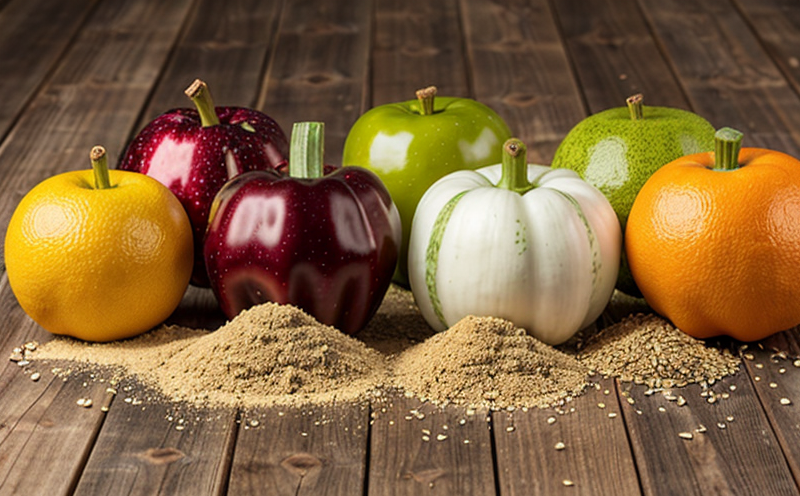FDA BAM Chapter 10 Listeria Detection in Vegetables
Food safety is a paramount concern for the food industry, especially when dealing with products that are consumed raw or minimally processed. Among these products, vegetables present unique challenges due to their diverse range of textures and potential points of contamination during harvest and post-harvest handling processes. The Bacteriological Analytical Manual (BAM) Chapter 10 provides robust protocols for detecting Listeria monocytogenes, a pathogenic bacterium that can cause serious infections in humans. This protocol is particularly essential for vegetables, which are often consumed without cooking.
The BAM Chapter 10 method involves several critical steps: sample collection, homogenization, enrichment broth culture, and finally, detection through confirmatory tests like PCR or conventional biochemical methods. The accuracy of this process directly impacts the safety of the produce reaching consumers.
Vegetables are particularly susceptible to contamination from soil, water, and surface contact during cultivation and processing. Therefore, testing for Listeria is vital before vegetables enter distribution channels. This ensures that retailers, manufacturers, and restaurants can provide safe products to customers. Compliance with FDA regulations not only protects public health but also enhances consumer trust in the brand.
The BAM Chapter 10 protocol is comprehensive and includes detailed instructions on sample handling, which minimizes cross-contamination risks. For example, proper aseptic techniques during sampling are crucial to avoid introducing contaminants into the tested material. This meticulous approach ensures that results reflect true contamination levels within the vegetable batches being evaluated.
The FDA's stringent guidelines ensure consistency across different laboratories performing these tests. By adhering strictly to the BAM Chapter 10 protocol, labs can generate reliable data that supports informed decision-making at all stages of food production and distribution.
Sample Preparation
Before initiating the Listeria detection process, it is essential to prepare samples correctly. Samples should be collected from various points along the supply chain, including field-to-factory interfaces, processing facilities, and storage areas. Homogenization of these samples is critical for achieving representative subsamples that accurately reflect the overall quality.
For instance, leafy greens like lettuce require thorough rinsing followed by homogenization in a buffered peptone water solution to ensure complete extraction of potential pathogens. For firm vegetables such as carrots or cucumbers, mechanical disruption via stomaching is necessary before transferring them into enrichment broth.
Enrichment and Isolation
The next step involves inoculating the prepared samples with a selective medium designed specifically for Listeria growth. This step amplifies any present Listeria cells while suppressing competing flora, allowing easier detection later on.
Selective media like Tetrathionate Broth (TTB) or Rappaport-Vassiliadis broth are widely used due to their ability to support Listeria monocytogenes growth without fostering interference from other microorganisms. Incubation periods vary depending upon the type of vegetable but generally range between 24 and 72 hours.
Confirmation
After initial enrichment, confirmatory tests are conducted using either PCR-based techniques or traditional biochemical reactions to identify Listeria monocytogenes definitively. These methods provide conclusive evidence about the presence or absence of this pathogen in tested samples.
PCR offers rapid results and high sensitivity; however, it requires specialized equipment and trained personnel. On the other hand, standard biochemical tests like IMViC (Indole-Methyl Red-Vogel's Citrate) are less expensive but take longer to yield results.
Reporting
The final stage of this testing procedure involves generating a detailed report summarizing all findings from each phase. This document includes information on the type(s) of enrichment medium used, incubation conditions, confirmation methods employed, and ultimate conclusions drawn regarding Listeria contamination status.
Accurate reporting is crucial for maintaining regulatory compliance while also providing actionable insights to improve future practices within agricultural operations and processing plants.
Industry Applications
| Application Area | Description |
|---|---|
| Food Production Facilities | Testing vegetables entering production lines ensures early detection of Listeria contamination, enabling prompt corrective actions. |
| Retail Establishments | Regular testing of incoming shipments helps maintain consistent food safety standards across stores. |
| Restaurants & Catering Services | Monitoring vegetable suppliers guarantees that only safe ingredients are used in preparing meals for patrons. |
| Agricultural Operations | Implementing this protocol allows farmers to identify problem areas early, thereby reducing risk factors associated with Listeria spread. |
The widespread adoption of the BAM Chapter 10 method across these sectors underscores its significance in safeguarding public health. By integrating this testing into routine quality control measures, stakeholders can significantly reduce the likelihood of Listeria outbreaks linked to vegetable consumption.
Why Choose This Test?
The FDA BAM Chapter 10 Listeria detection method is widely recognized for its reliability and accuracy, making it an ideal choice for various stakeholders involved in vegetable safety.
- Rigorous Standards: Compliance with stringent federal guidelines ensures consistency across different laboratories.
- Precision: The protocol minimizes errors through standardized procedures, leading to precise detection rates.
- Comprehensive: Covering multiple stages from sampling to final confirmation, it provides a holistic view of contamination risks.
- User-Friendly: Detailed instructions and training resources make the method accessible even to less experienced personnel.
Incorporating this test into your quality assurance program demonstrates commitment to maintaining high food safety standards. It offers peace of mind knowing that every batch of vegetables passes rigorous scrutiny before reaching consumers.
Customer Impact and Satisfaction
- Informed Decisions: Reliable testing results empower stakeholders to make well-informed choices about which products meet strict safety criteria.
- Increased Trust: Consistent compliance with FDA regulations enhances consumer confidence in the brand.
- Improved Reputation: Demonstrating dedication to food safety helps build a positive reputation among customers and partners.
- Reduced Risks: Early detection of Listeria minimizes potential health hazards associated with vegetable consumption, thereby protecting public health.
The success stories from various industries highlight the tangible benefits gained by implementing this testing protocol. Retailers report improved customer satisfaction following implementation, while suppliers appreciate the enhanced reputation that comes with consistent quality assurance practices.





